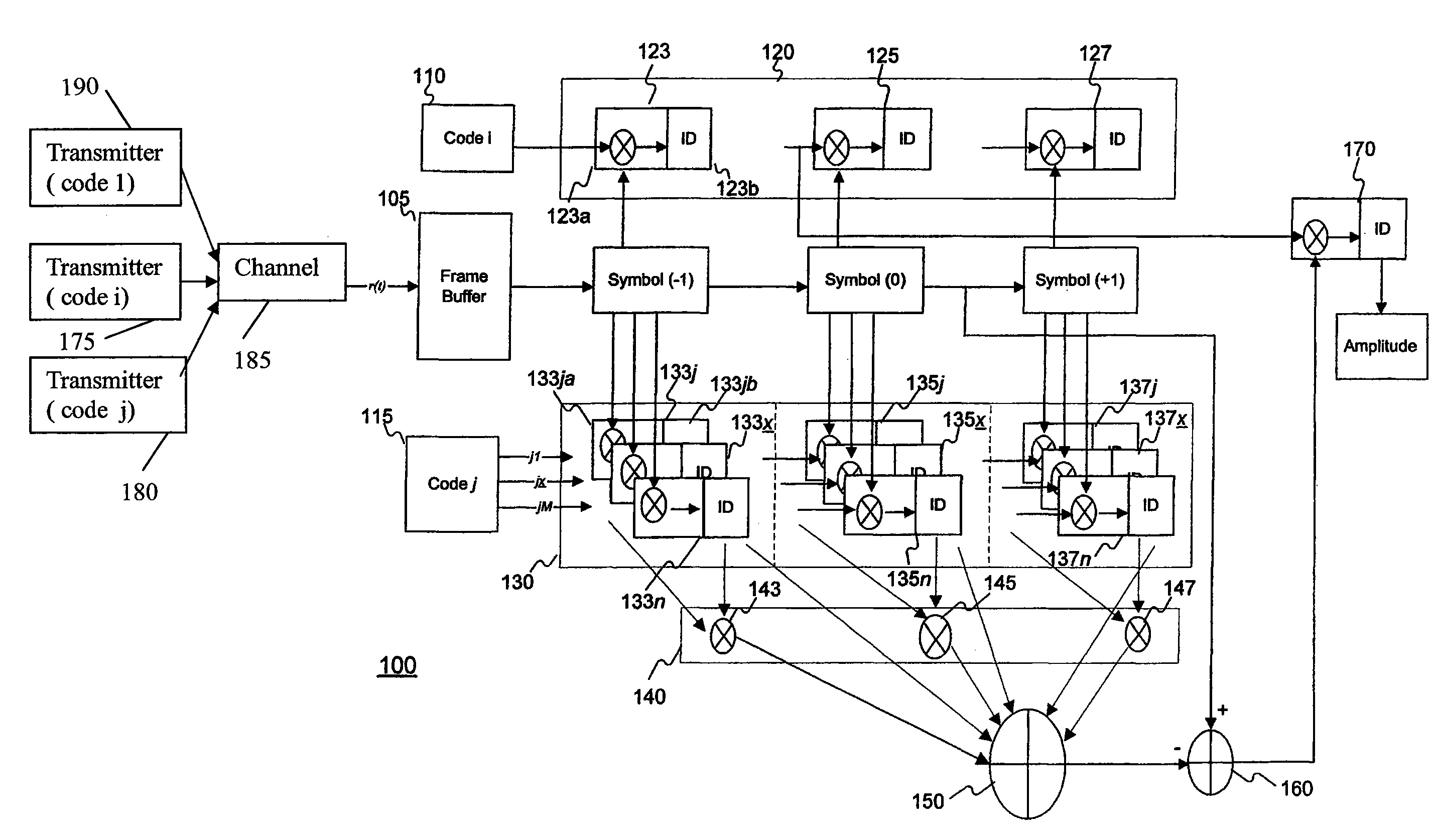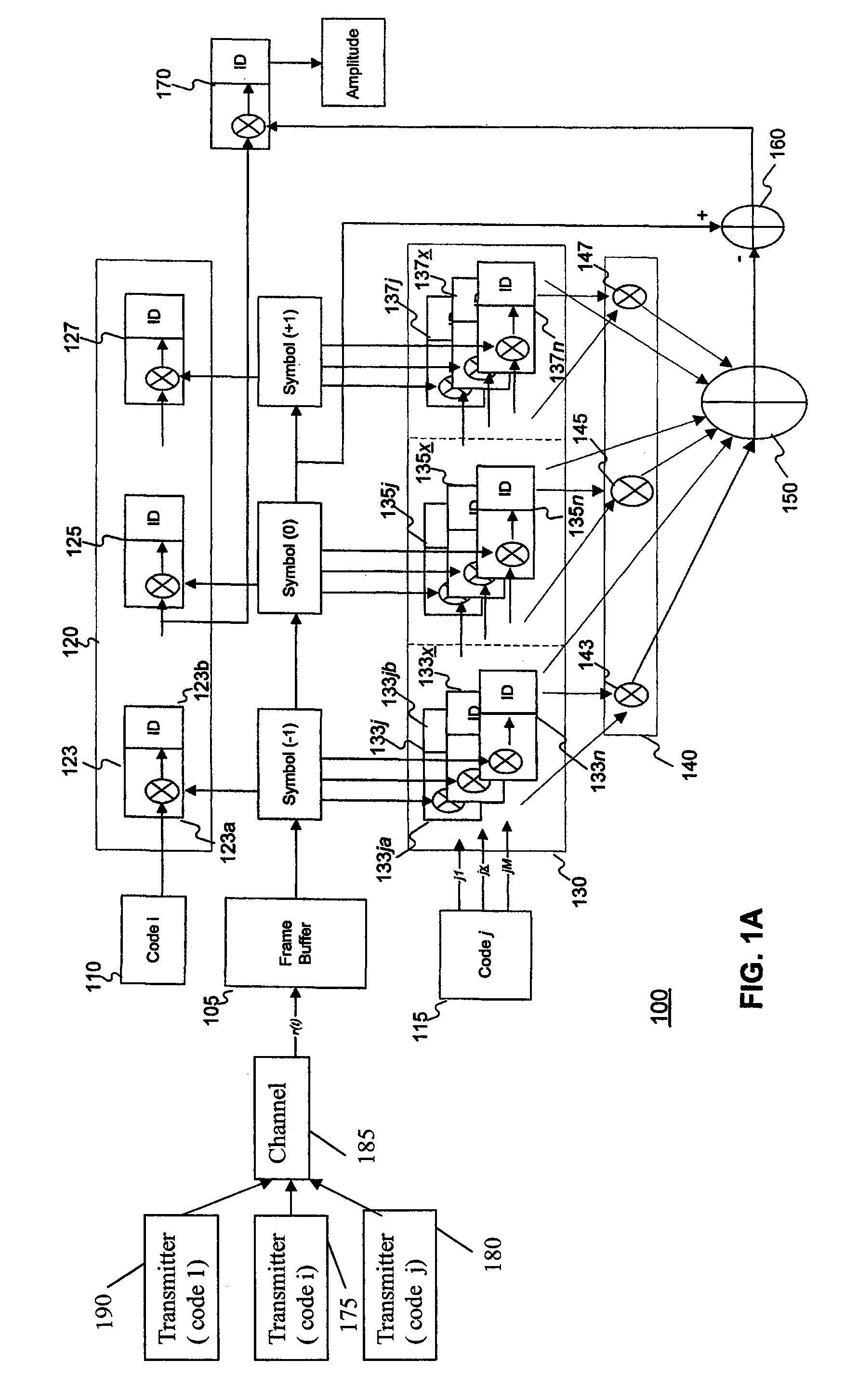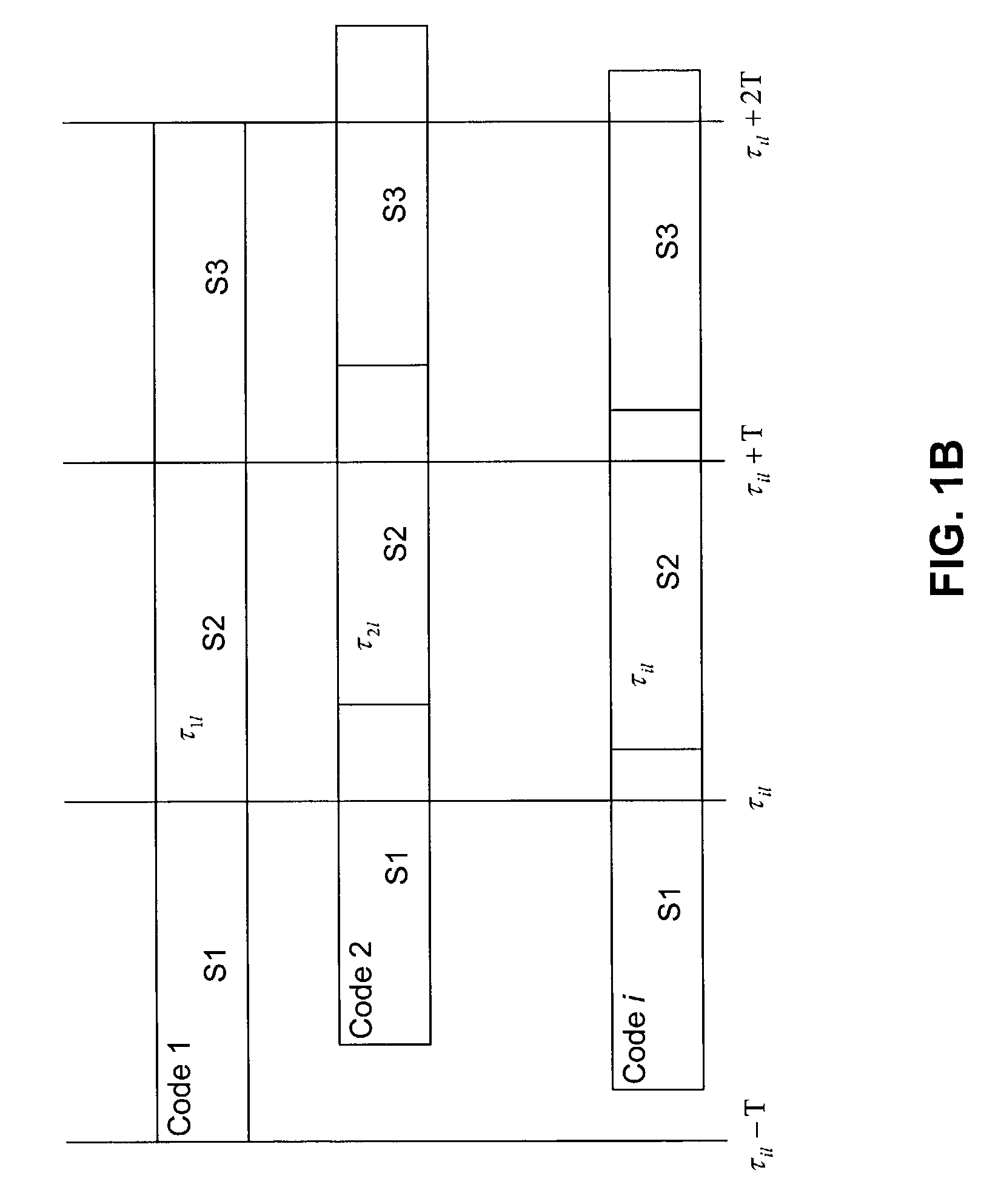Method and system of interference cancellation in multi-cell CDMA systems
a multi-cell, interference-cancelling technology, applied in the field of methods, can solve the problems of limiting the effectiveness of signals received over a wireless medium in a multiple access communication system, affecting the efficiency of multi-user detection schemes, and reducing system performance, so as to reduce the effects of interferen
- Summary
- Abstract
- Description
- Claims
- Application Information
AI Technical Summary
Benefits of technology
Problems solved by technology
Method used
Image
Examples
Embodiment Construction
[0001]This application claims the benefit under 35 U.S.C. § 119(e) of U.S. provisional application No. 60 / 365,181 entitled “Methods of Interference cancellation in Multi-cell CDMA Systems,” filed on Mar. 19, 2002, the disclosure of which is expressly incorporated herein by reference.
FIELD OF THE INVENTION
[0002]The present invention relates to a multi-user detection scheme in a direct sequence code-division multiple-access (DS-CDMA) communication system and, more particularly, to a method and system for reducing the effects of multi-user interference, in multi-cell systems.
BACKGROUND OF THE INVENTION
[0003]Multiple access communication system schemes such as frequency division multiple access (FDMA), time-division multiple access (TDMA), and code-division multiple access (CDMA) are designed to eliminate or reduce signal interference between multiple users. In real-world applications, however, signals received over a wireless medium in a multiple access communication system suffer from...
PUM
 Login to View More
Login to View More Abstract
Description
Claims
Application Information
 Login to View More
Login to View More - R&D
- Intellectual Property
- Life Sciences
- Materials
- Tech Scout
- Unparalleled Data Quality
- Higher Quality Content
- 60% Fewer Hallucinations
Browse by: Latest US Patents, China's latest patents, Technical Efficacy Thesaurus, Application Domain, Technology Topic, Popular Technical Reports.
© 2025 PatSnap. All rights reserved.Legal|Privacy policy|Modern Slavery Act Transparency Statement|Sitemap|About US| Contact US: help@patsnap.com



